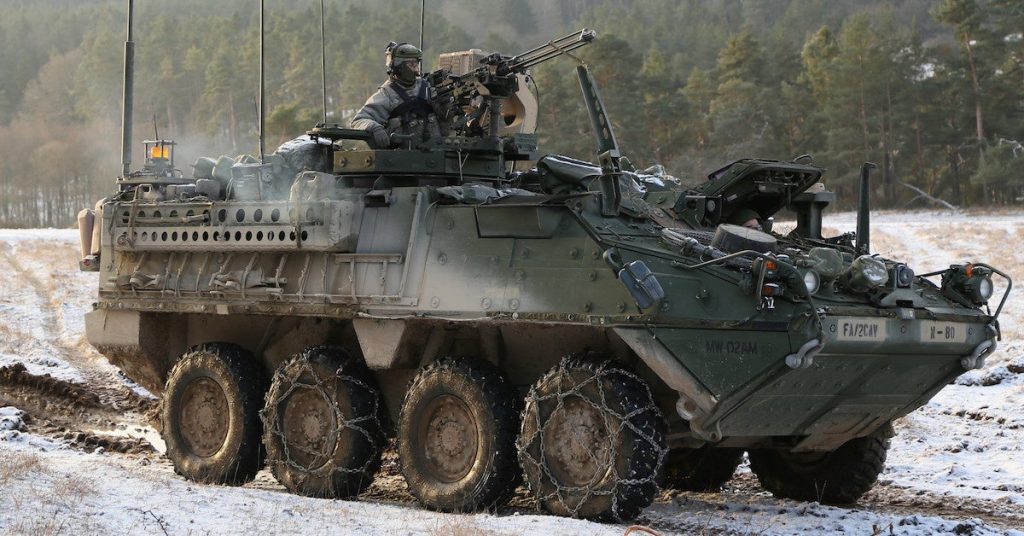Debutants at Army exercises always attract a lot of attention. The US Army has displayed the first combat-capable laser weapon prototype, which was developed in an astonishing 24 months. The solid-state Directed Energy-Manoeuvre Short-Range Air Defence (DE M-SHORAD). The weapon system was mounted on a Stryker combat vehicle at combat shoot off at Fort Sill, Oklahoma, as an Army manoeuvre.
Laser weapon systems are becoming more and more lucrative as options for war for modern planners. The round of the weapon system merely costs a dollar and can strike distant enemies with pinpoint precision. The laser is set to be used as a stand-off defensive weapon system against threats like drones, rockets, artillery, and mortars. The only catch here is that Hollywood lovers won’t still see soldiers dashing across the battlefield until the laws of physics are altered. Initially, these systems were mounted on the US Navy ships, but with the advancement of technology, they can now be mounted on vehicles too.
The weapon falls under the ambit of the RCCTO, Rapid Capabilities and Critical Technologies Office, which is part of the US Army’s multi-domain operations to modernise air defence and missile systems and induct newer laser technologies. The Air and Missile Defence Cross-Functional Team, Fires Centre of Excellence, and the US Army Test and Evaluation Command were deployed recently in the DE M-SHORAD Combat Shoot-Off.
The system during the shoot-off was put through real situations to assess the system’s response; also, this is bound to improve the performance of the combat system. The soldiers who were part of the experiment used immersive technology, which gave them a better idea of how the system will be used. They mastered in only days to the point where they could carry out target acquisition, aim point selection, and engagements. An important suggestion that came through after the trials was that its conventional controller is swapped with commercial gaming controllers.
“This is a prototype, and we are going to learn from this,” says Lieutenant General L. Neil Thurgood, Director for Hypersonics, Directed Energy, Space and Rapid Acquisition. “We needed this to do two things: design it so it is safe enough to give to soldiers and make sure it engages with the target it needed to. The science project in this technology is over. It’s time to give our soldiers this first-ever operational capability.”
This is not all the RCTTO aims at unveiling a 4 laser Stryker by 2022.

